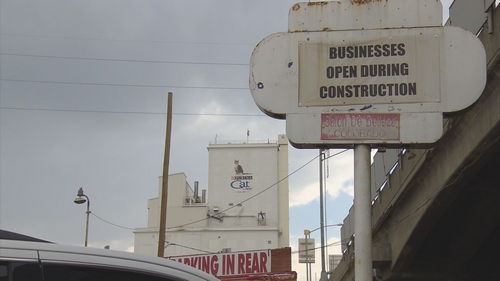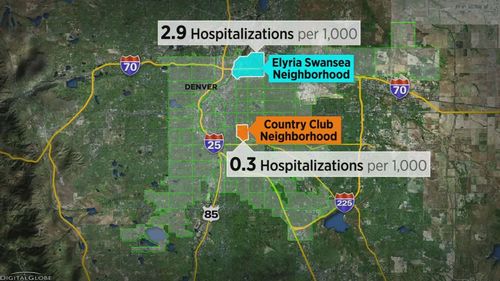State air quality monitoring data shows the air quality monitors near the Globeville, Elyria Swansea neighborhoods often measured higher air pollution levels than other areas of the city over the last five years, frequently exceeding safe limits set by the Environmental Protection Agency, when other monitors in the city didn’t.
“We’ve known it for a long time, we’ve been involved in the fight with the I-70 expansion, the Suncor Refinery, there’s an asphalt factory in that community, a dog food factory in that community, a lot of comprehensive and cumulative pollution sources in that community that made this community so vulnerable, especially to respiratory diseases,” said Ean Tefoya, an activist with the Colorado Latino Forum.
There seems to be a correlation between Denver’s air pollution and COVID-19 hospitalization rates, according to a CBS4 Investigates analysis of government data. Neighborhoods with greater air pollution concentrations are also areas where more people were hospitalized due to COVID-19, and those neighborhoods are primarily poorer neighborhoods with a majority of Hispanic residents.
CBS4 Investigates found Hispanic people in Denver are more than twice as likely to be hospitalized due to COVID-19 than are white people living in the city.

For example, the Elyria Swansea neighborhood had a rate of 2.9 hospitalizations per 1,000 people, but the Country Club neighborhood only had 0.3 hospitalizations per 1,000 people.
A study published this Spring by Harvard researchers shows just small increases in particulate matter air pollution exposure can increase a person’s chance of dying from COVID-19 by 8%.
“When we first found out about the study, it was really quite scary, it’s not something that anybody wants to see when your community is this vulnerable,” Tefoya said.
Tefoya and more than 40 other organizations asked the state to temporarily halt the I-70 expansion project through the Gobeville, Elyria Swansea neighborhoods at the height of the pandemic, to provide some relief for those communities, but the construction didn’t stop.
Researchers with Denver Health say air pollution that leads to a chronic lung disease could be a risk factor with COVID-19, but they say there are likely various reasons why Denver’s Hispanic populations have been more adversely affected, including that Hispanic populations may have a higher rate of chronic conditions, are more likely to be essential workers who are more regularly exposed to the virus, and may have less of an ability to socially distance themselves from others.

Elizabeth Torres Mendez, an administrative worker at Clinica Tepeyac, a health clinic operating in the Elyria Swansea neighborhoods, says she’s seen the fear in the patients who have come through the clinic, but she too, also was fearful when she contracted the virus in April.
She was in the hospital for a week.
“It felt like I had cement in my lungs,” Torres Mendez recalled. “Even though I had the oxygen on, I still felt like I couldn’t breathe.”
While she was sick, all three of her children and her grandfather also got sick with the virus. She and her kids are doing okay now, but sadly, her grandfather, who she says was like a father to her, passed away.
“It changes your life,” Torres Mendez said. “It has changed my life, I value my relationships with my family a lot more.”
Now she hopes there can be more remedies for Denver’s Hispanic populations who have been more adversely affected by COVID-19.
“Your lungs are pretty affected,” she said. “If we could lower that pollution, I think it would help us a lot more.”



